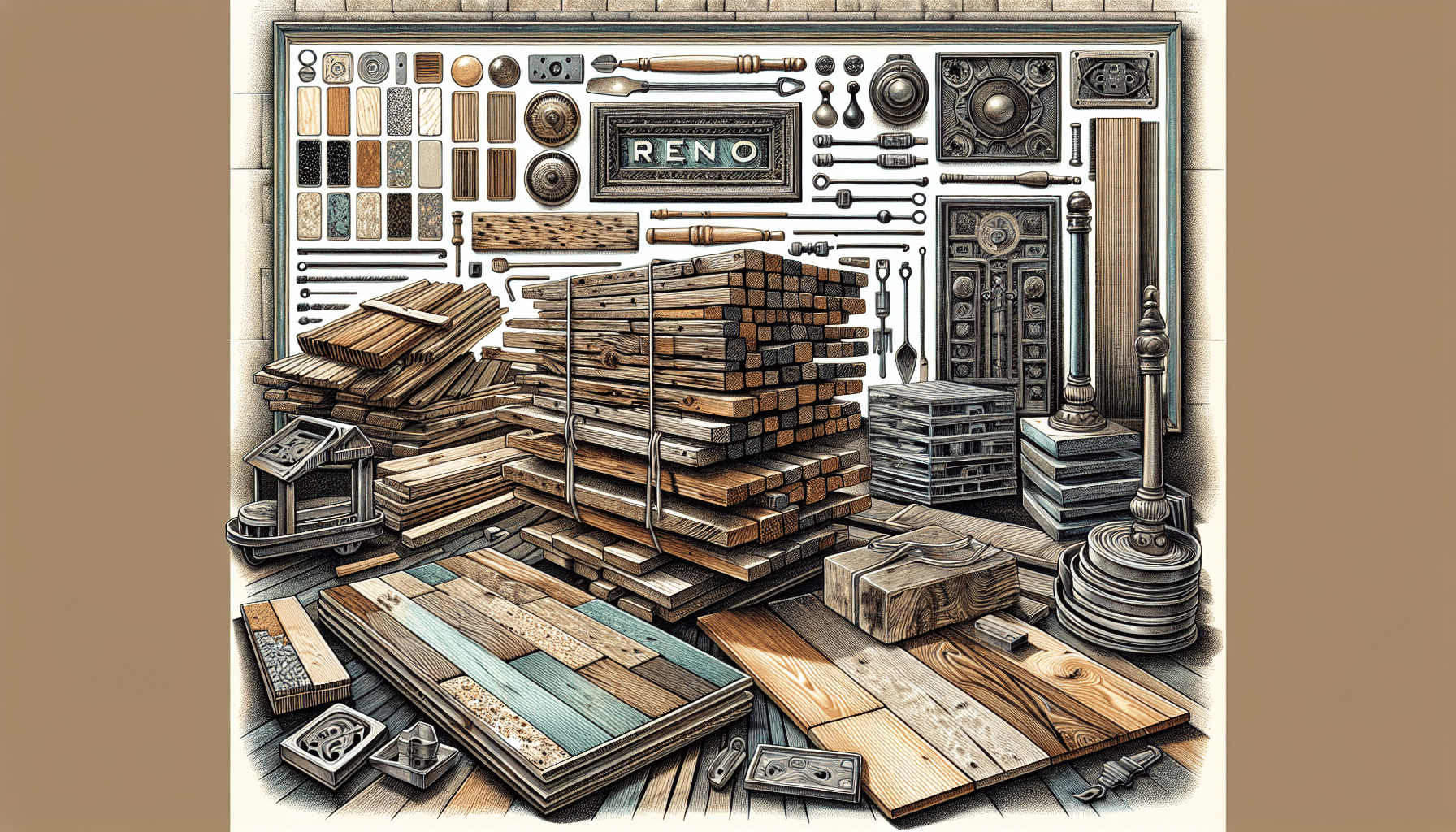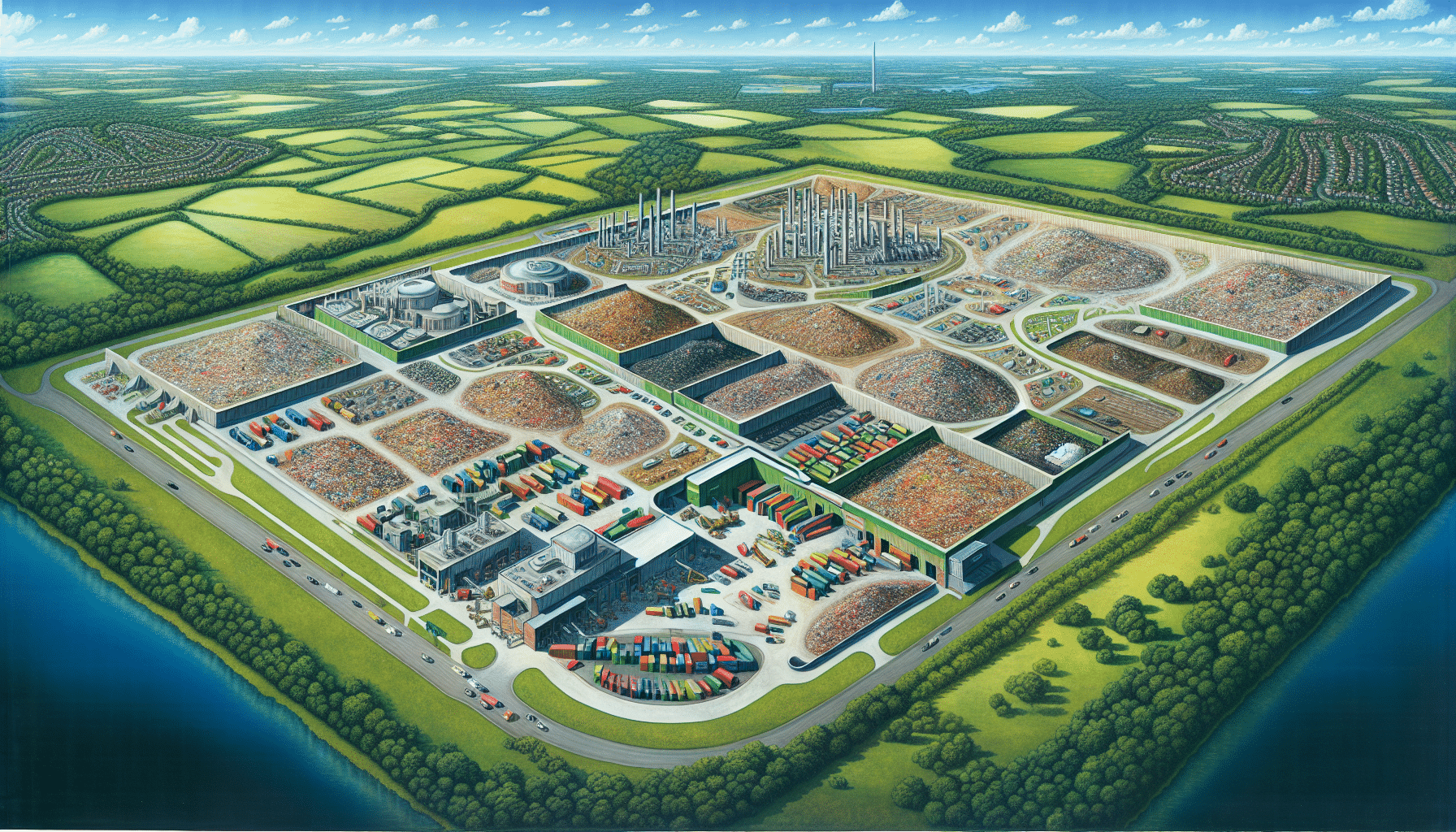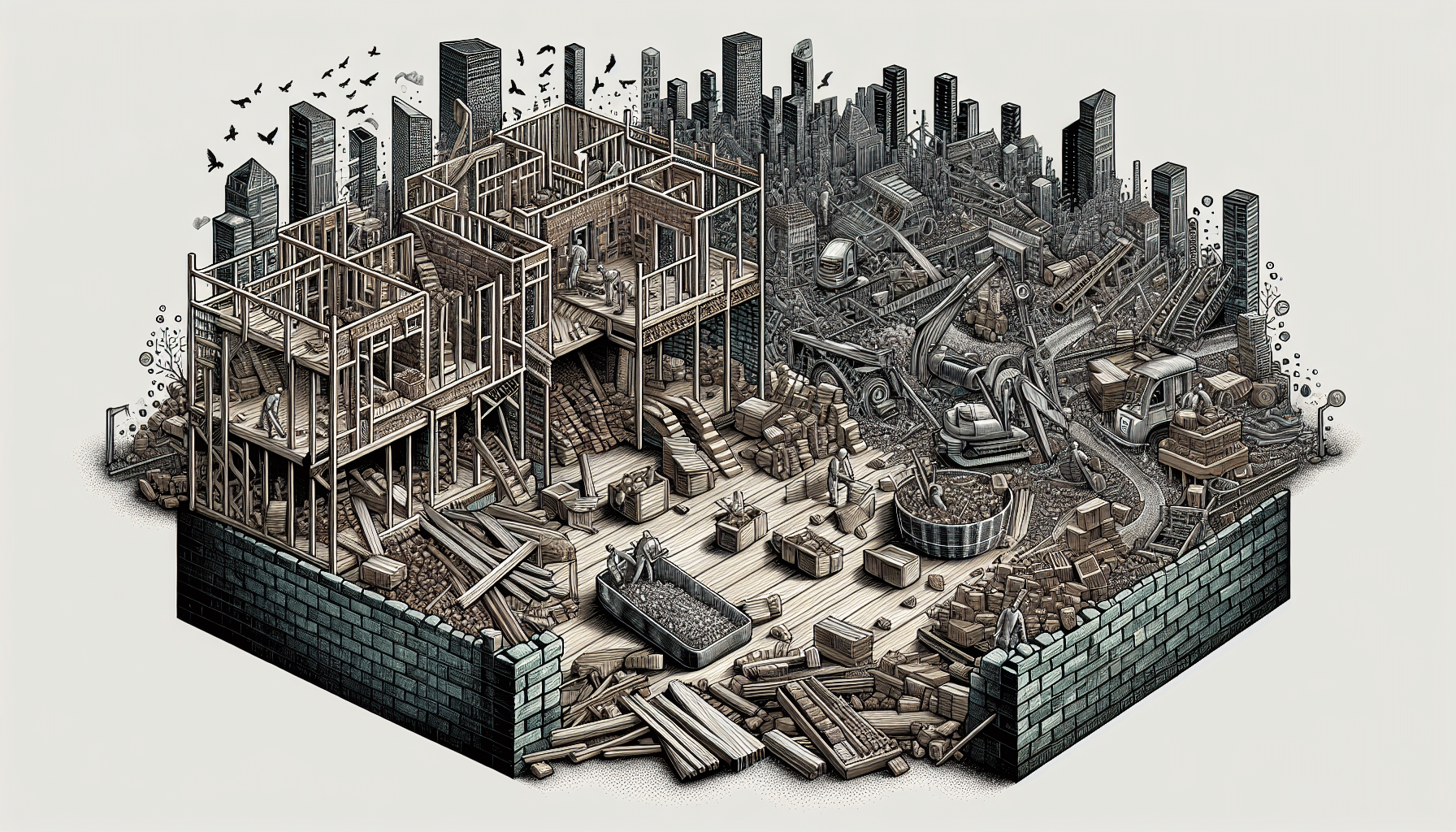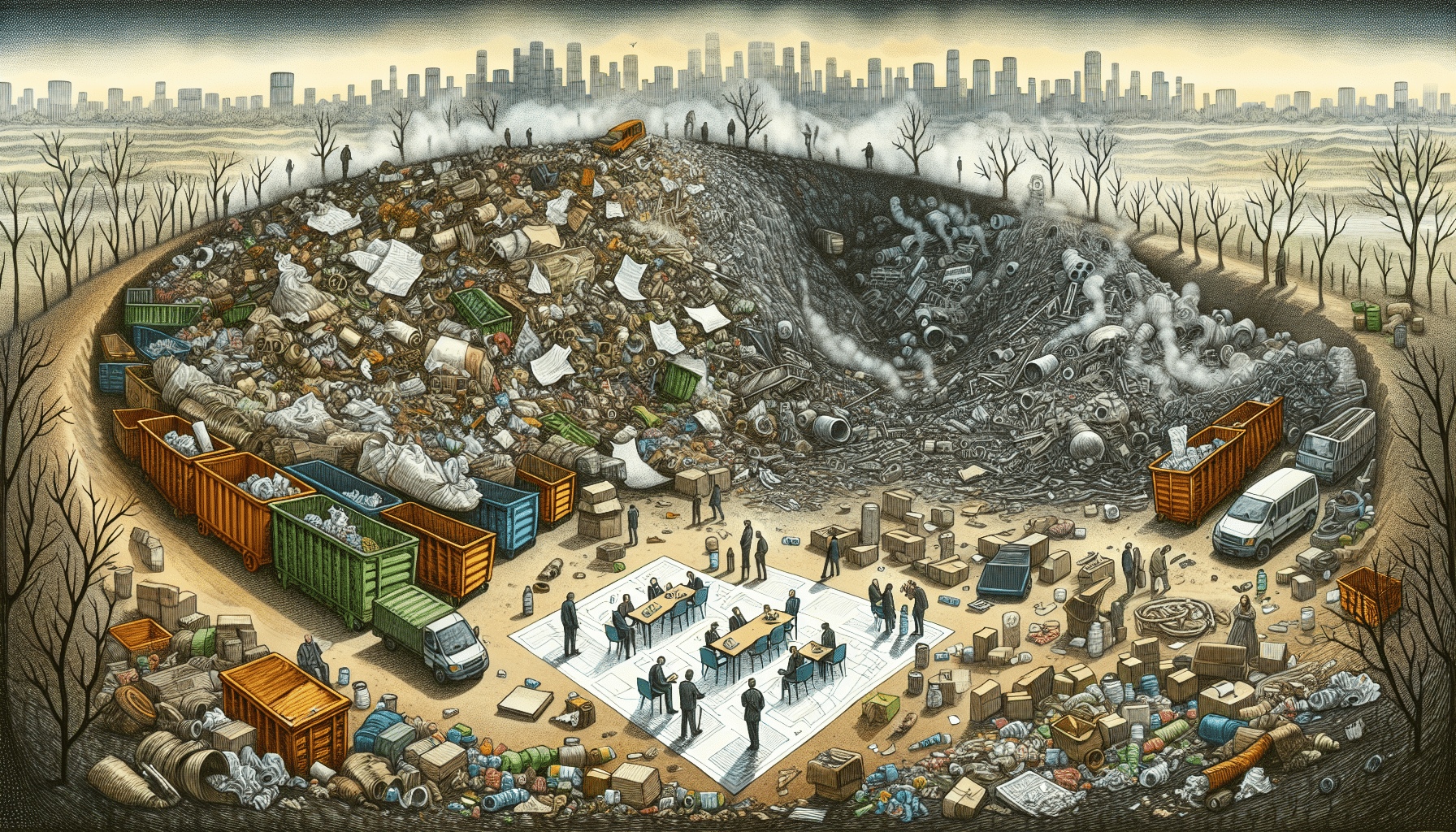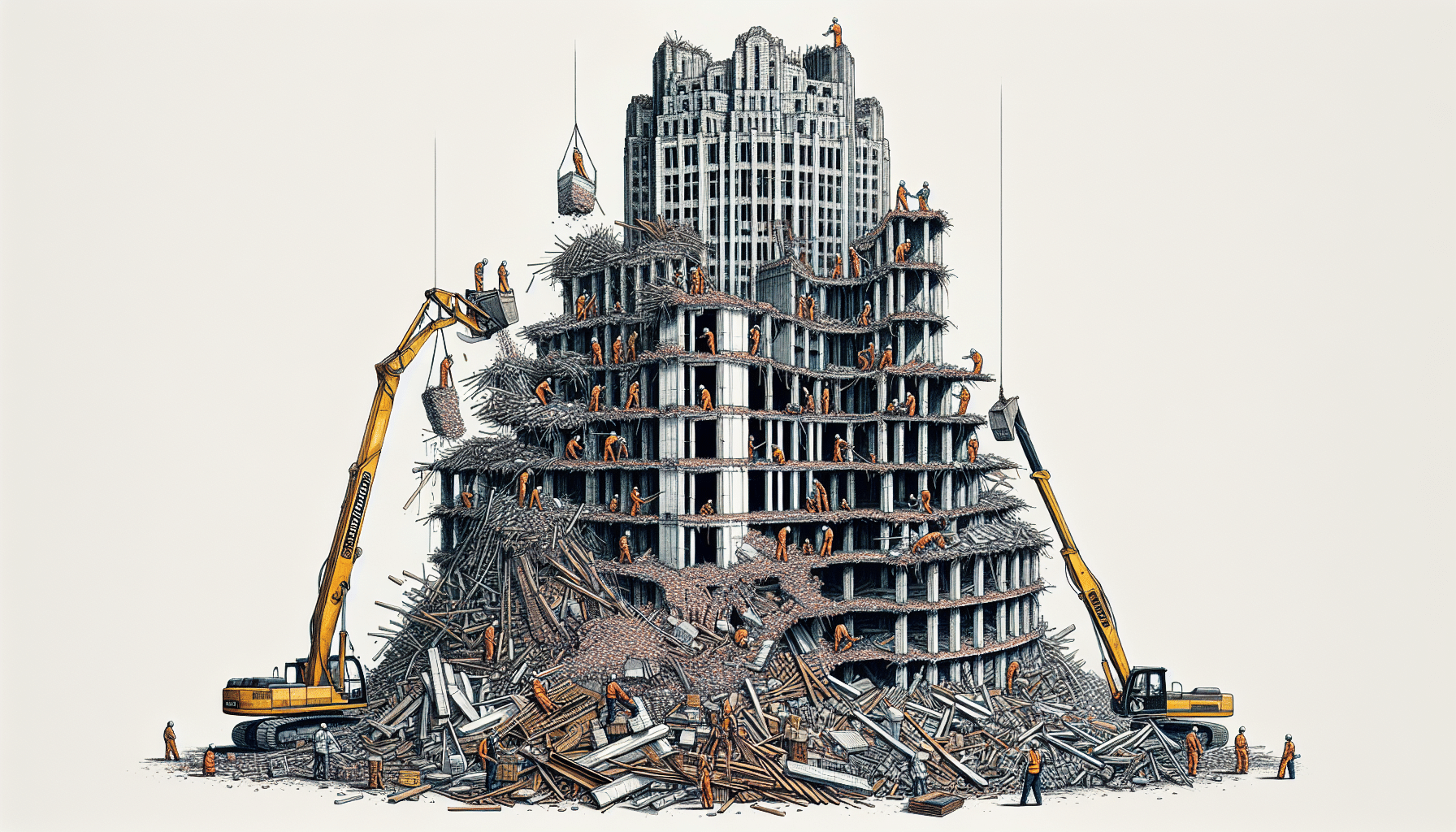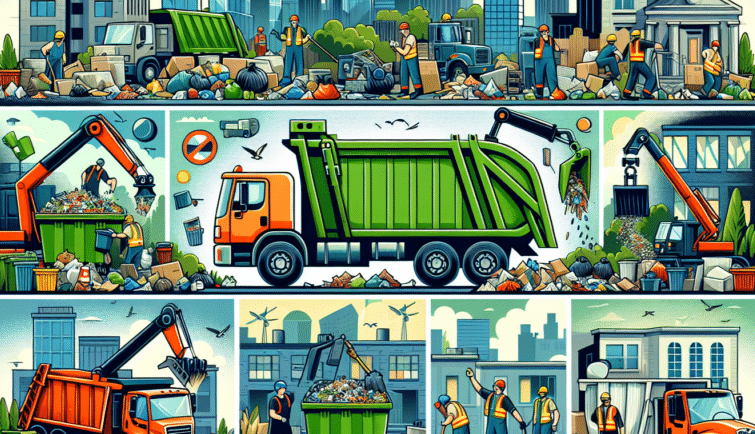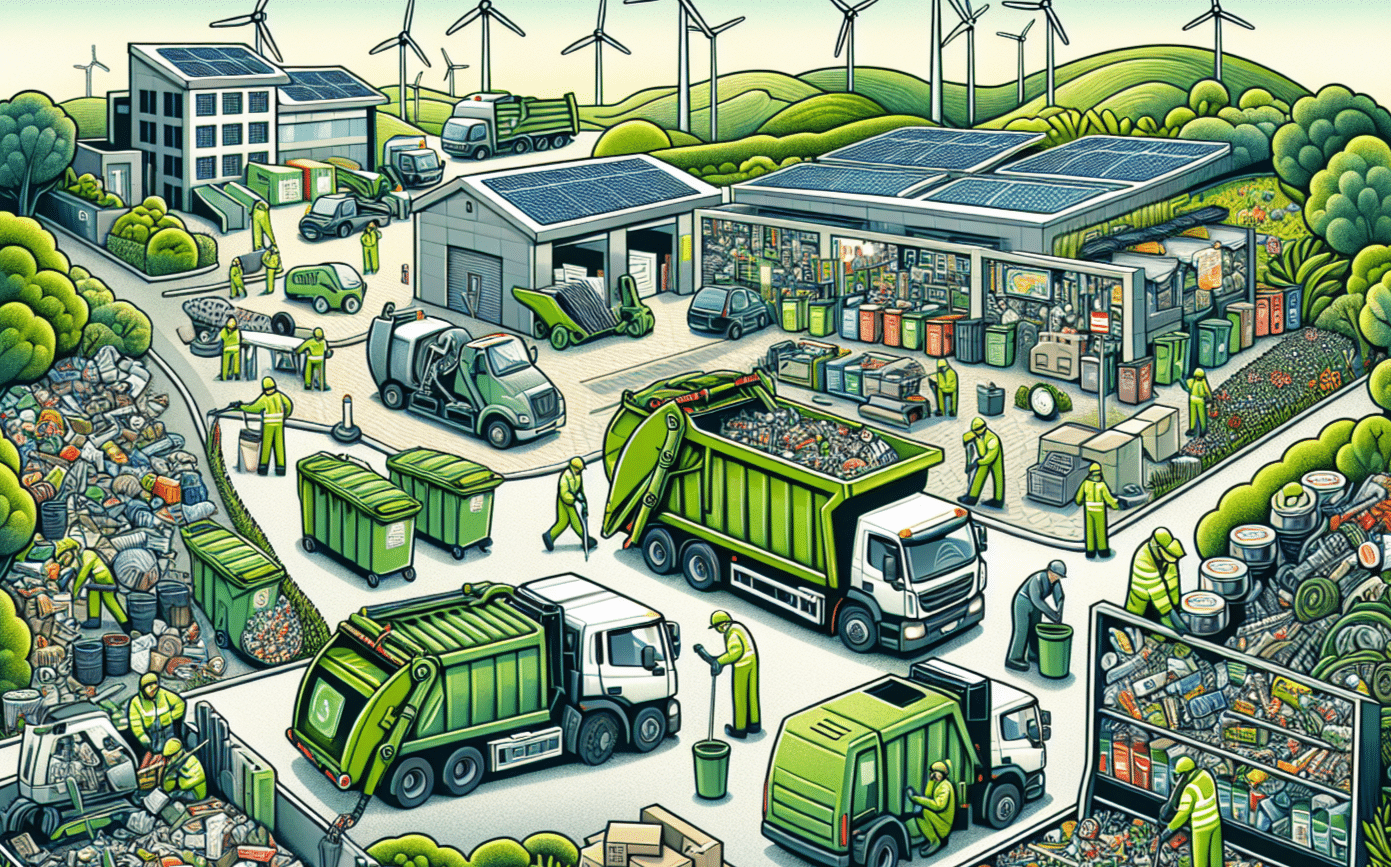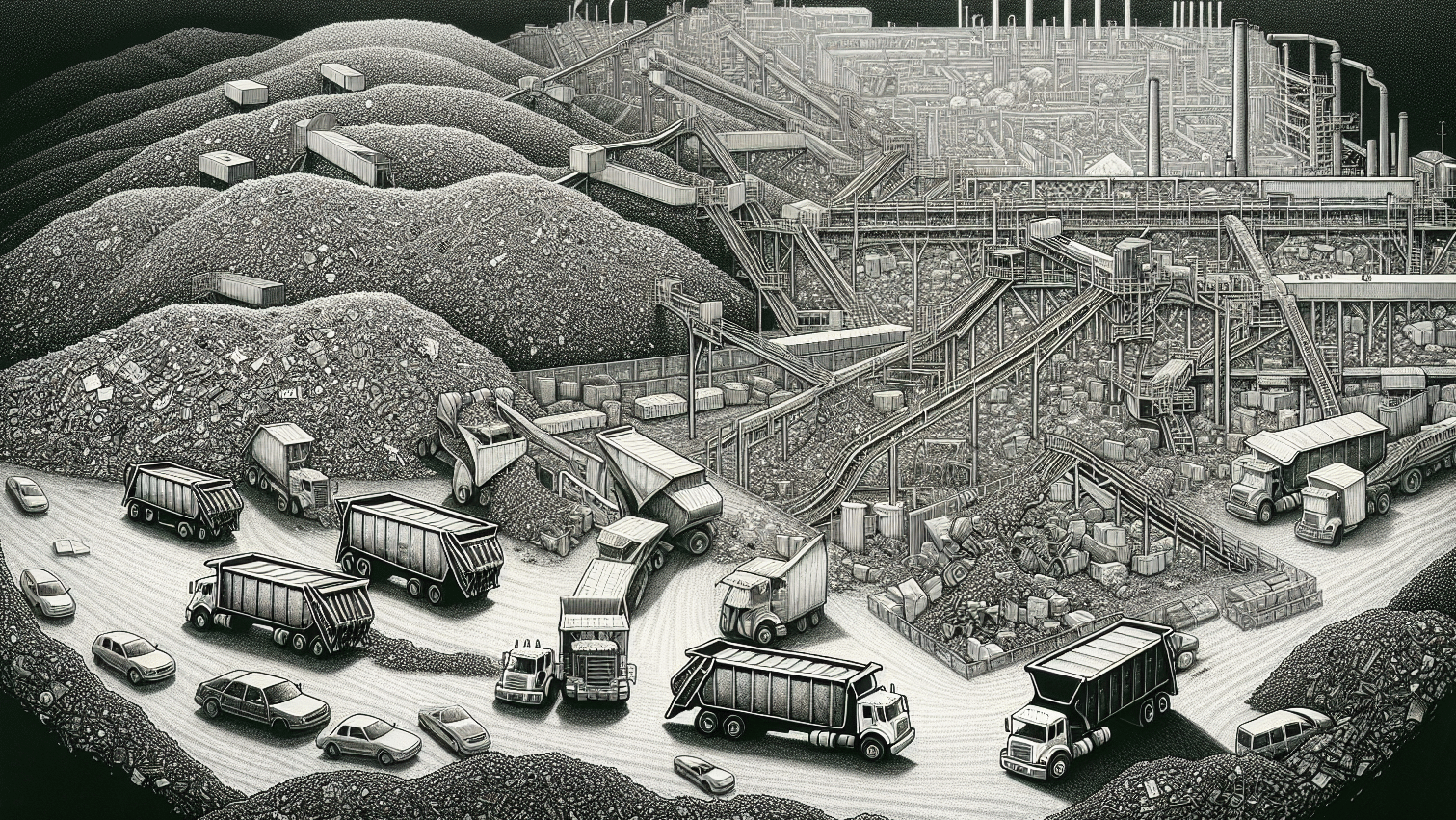This article is your guide to mastering the complexities of modern building and construction with innovative materials, proven project management methods, and the latest technological advances. Explore the essentials for durable, energy-efficient, and sustainable construction, ensuring your projects excel in today’s ambitious architectural landscape.
Key Takeaways
- Innovative building materials, smart glass solutions, and green roof systems are shaping modern construction with a focus on sustainability and other ecological benefits.
- Effective construction project management involves leveraging technology for streamlined workflow, employing risk management strategies, and fostering collaboration between architects and engineers.
- Advancements in materials and engineering practices, such as the use of heavy timber, innovative structural foundations, and earthquake resistance techniques are revolutionizing building design and resilience.
Innovative Building Materials Shaping Modern Construction

Innovative building materials are not only creating opportunities for bold new architectural designs but are also addressing the pressing need for sustainability and energy efficiency in construction projects. With advancements that make materials lighter, more durable, and eco-friendlier, builders and architects are equipped to meet the challenges of modern construction.
Advanced Composite Materials for Enhanced Durability

In the quest for longevity and resilience, the construction industry has turned to composite materials that are revolutionizing the durability of structures. These high-performance compounds, including silicones and acrylic binders, are designed to resist extreme temperatures and environmental stresses, ensuring that buildings contribute to a more sustainable future by incorporating recycled materials.
Incorporating Recycled Materials in Construction
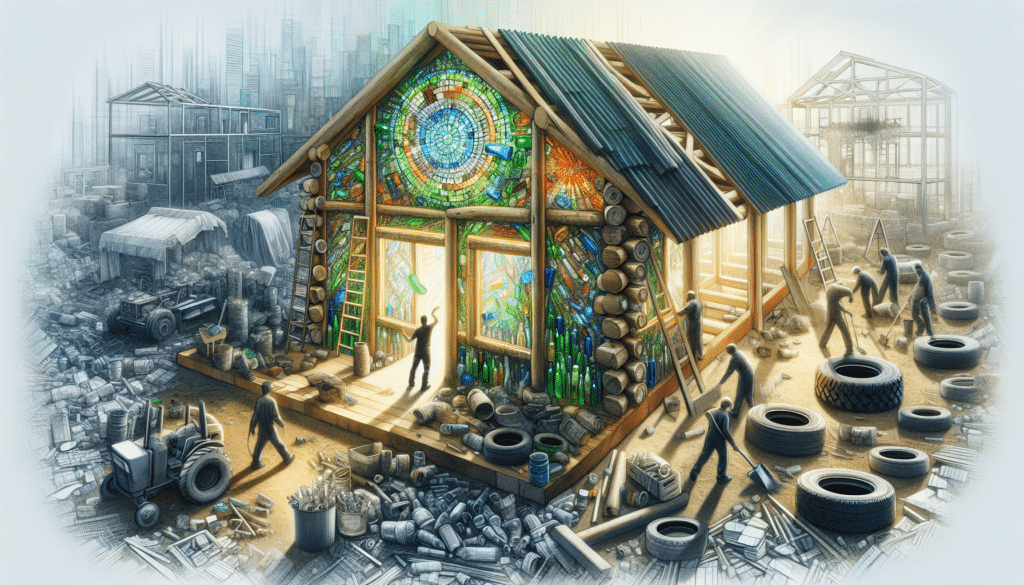
The integration of recycled materials into building construction is an imperative and strategic economic decision. By turning to advancements like the AMPLIFY™ Si PE 1000 Polymer System, the construction industry can minimize waste and offer an alternative method of disposal for materials that would otherwise contribute to landfill volume.
Smart Glass Solutions for Energy-Efficient Buildings
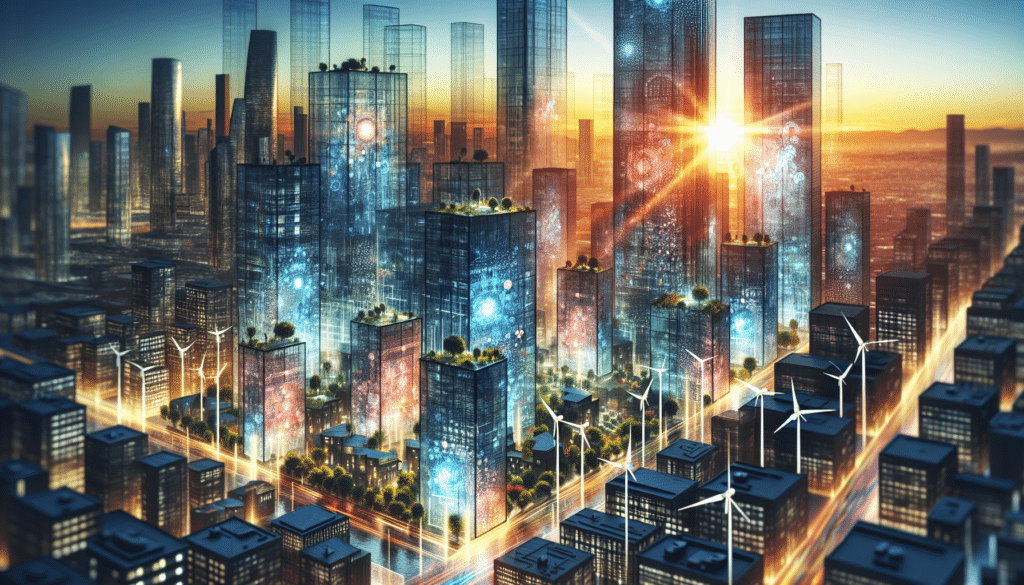
Energy efficiency is at the forefront of modern construction, with smart glass technologies leading the charge. These cutting-edge solutions are pivotal in reducing a building’s energy consumption. By regulating heat transfer and leveraging passive cooling materials like hydroceramics, smart glass is setting a new standard for sustainable building design.
The Art of Construction Project Management
The bedrock of any successful construction project lies in effective management. Setting clear goals, maintaining open lines of communication, and implementing comprehensive risk management plans are all integral to the process. With the construction landscape becoming increasingly complex, project managers must harness both traditional best practices and modern technological tools to ensure the successful completion of projects.
Leveraging Technology for Streamlined Workflow
The digital transformation within the construction industry has paved the way for software solutions that streamline project workflow. From real-time communication tools to project management platforms that incorporate predictive analytics, the right technology can significantly improve the coordination, efficiency, and overall success of construction projects.
Risk Management Strategies in Building Construction
In the face of unforeseen challenges, risk management strategies are essential in safeguarding construction projects. By employing predictive analytics and ensuring proper insurance coverage, construction managers can mitigate potential issues and maintain the financial and operational stability of their projects.
Collaboration Between Architects and Engineers
The relationship between architects and engineers is imperative for the success of any construction project. Through the use of Extended Reality (XR) technologies, these professionals can collaborate more effectively, solving complex problems and ensuring that the final structure stands as a testament to their collective expertise.
Heavy Timber and the Revival of Wooden Architecture

In a remarkable shift towards sustainability and natural aesthetics, heavy timber is making a strong comeback in modern architecture. Whether it’s residential spaces or corporate environments, the use of mass timber is redefining the possibilities of wooden structures.
Innovations in Timber Processing for Construction
Timber processing has undergone a remarkable transformation, with new techniques enhancing the material’s strength and fire resistance. Innovations such as wood densification and the creation of a protective char layer have made timber a more versatile and robust option for modern construction projects.
Case Studies: Heavy Timber in Commercial Structures
The application of heavy timber in commercial structures is being actively used and considered in buildings around the world. From the ingenuity seen in Melbourne’s T3 Collingwood building to the pioneering Roots in Hamburg, these case studies exemplify how heavy timber is shaping the landscape of commercial architecture.
Interior Finishes: Quality, Aesthetics, and Functionality
The final touches in any construction project reflect its overall quality and aesthetic appeal. As we continue to see a rise in the use of natural materials and sophisticated design choices, it’s clear that interior finishes play a crucial role in creating spaces that are visually striking, highly functional, and durable.
High-Performance Masonry for Elegant Interiors
High-performance masonry offers a timeless quality to elegant interiors. With tools like masonry trowels shaping and smoothing surfaces, the craft of masonry brings a level of sophistication and durability to buildings that is unrivaled in the realm of interior finishes.
The Role of Acoustic Engineering in Interior Design
Sound quality plays an essential role in interior design. By strategically using materials that manage reverberation and noise, designers can create environments that enhance comfort and productivity, making acoustic engineering an indispensable element of modern interior design.
Green Roof Systems: Combining Ecology with Aesthetics
Green roof systems represent a harmonious blend of ecological responsibility and visual beauty. As urban areas grapple with environmental challenges, these living roofs offer a compelling solution that provides significant benefits, including:
- Temperature regulation
- Air quality improvement
- Stormwater management
- Noise reduction
- Increased biodiversity
- Extended roof lifespan
- Energy savings
- Aesthetic appeal
These benefits make green roofs a valuable addition to any urban environment.
Benefits of Green Roofs for Urban Environments
The benefits of green roofs in urban environments are manifold. Along with their aesthetic appeal, green roofs act as natural insulators, cut down on energy consumption, and enhance biodiversity. All of these factors contribute to healthier, more sustainable cities.
Installation Techniques and Maintenance Considerations
The successful implementation of green roofs requires careful consideration of installation techniques and maintenance. Understanding the unique demands of different green roof systems is key to ensuring their longevity and effectiveness in urban landscapes.
Advancements in Structural Foundations and Earthquake Resistance
In regions prone to seismic activity, advancements in structural foundations and earthquake resistance are of paramount importance. Innovative engineering solutions are enabling buildings to withstand any potential environmental hazards.
Innovative Foundation Solutions for Challenging Terrains
The formation of challenging terrains requires innovative foundation solutions. From dynamic compaction to helical piles, engineers are employing a variety of techniques to secure structures firmly in place, regardless of the ground conditions they face.
Seismic Retrofitting: Securing Existing Buildings
Seismic retrofitting is a crucial process for enhancing the earthquake resistance of existing buildings. By upgrading certain structural components, engineers can significantly improve the resilience of older structures against seismic events.
Harnessing Solar Energy in Construction Projects
Solar energy is increasingly being harnessed in construction projects as a means of generating renewable power. Innovative solar solutions, from rooftop installations to solar trees, are making it easier for buildings to produce sustainable energy without compromising on design or functionality.
Integrating Photovoltaic Systems in Building Designs
The integration of photovoltaic systems into building designs requires careful planning and consideration of structural capacity, orientation, and local regulations. With the aid of simulation software, architects and engineers can optimize the placement and efficiency of these systems.
The Economics of Solar Installations for Commercial and Residential Units
The economics of solar installations for commercial and residential units are increasingly attractive. With the potential for lower energy bills and an increase in property value, solar PV systems offer a financially viable option for those looking to invest in renewable energy solutions.
Essential Tools and Equipment for Modern Builders
The tools used by contractors and builders are as important as the materials they assemble. From essential hand tools to large machinery and advanced technology, the right equipment can make all the difference in the efficiency, safety, and quality of a construction project.
High-Tech Tools Transforming the Building Process
High-tech tools such as drones and virtual reality are transforming the building process. These technologies not only enhance construction management but also provide innovative ways to visualize and simulate construction scenarios, improving accuracy and facilitating better decision-making.
Safety Gear and Protective Equipment: A Must-Have for Construction Professionals
Safety gear and protective equipment are non-negotiable for construction professionals. Some essential items include hard hats, safety glasses, and sturdy work shoes. These items are essential for ensuring the well-being of workers on-site and maintaining a safe working environment.
Summary
The construction industry is on the cusp of a new era, one where innovation, sustainability, and technological advancement converge to redefine what’s possible. From the materials we use to the way we manage projects, every aspect of construction is being transformed, paving the way for aesthetically pleasing buildings that are environmentally responsible and resilient for the future.
Frequently Asked Questions
What are some of the innovative materials being used in modern construction?
Innovative materials such as advanced composites, smart glass solutions, and recycled materials are being used in modern construction to enhance durability, sustainability, and energy efficiency.
How is technology impacting construction project management?
Technology in construction project management improves efficiency, communication, risk management, and predictive analytics.
Why is heavy timber making a comeback in architecture?
Heavy timber is making a comeback in architecture due to its strength, sustainability, and fire resistance, which make it an attractive choice for modern construction.
What role do green roofs play in urban environments?
Green roofs play an important role in urban environments by providing natural insulation, reducing urban heat islands, improving air quality, and supporting biodiversity, ultimately contributing to more sustainable and livable cities.
Are solar energy systems economically viable for residential and commercial buildings?
Yes, solar energy systems are economically viable for both residential and commercial buildings, offering long-term economic benefits and environmental advantages.













